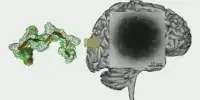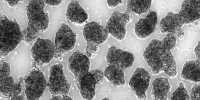Although online dating has broadened the pool of potential partners to unprecedented levels, one out of every ten weddings is between first and second cousins. This poses a significant risk of inbreeding, but humanity has been through a lot worse. Surprisingly, a study of prehistoric human DNA suggests that mating among close cousins was far more common than it is today. Many animals go to considerable lengths to avoid inbreeding since it is such a threat to their survival. Elephants are one of many species that exclude young males from the herd to prevent them from mating with their sisters or cousins. Female banded mongooses go to war to find spouses with whom they are not related.
It’s understandable that in a time when few people traveled more than a day’s walk from their town, people married close relatives because that’s all they met. It’s natural to extrapolate back to a time before modern transportation, or even horses, and conclude that our forefathers had offspring with members of their tiny bands. Its how fiction like Clan of the Cave Bear portrays the paleolithic period, however, according to a new study published in Nature Communications, the exact opposite is true.
Only 53 (3 percent) of 1,785 people with DNA showing their parents were first cousins, while one was likely the product of brother-sister or parent-offspring incest, according to the study. Except for three of 11 persons from Iron Age Republican Rome, the 53 people were dispersed across history and across the populated continents, rather than being concentrated in any one era.
It’s a mystery how our forefathers did it. Perhaps incest taboos extended to cousins, and festivals brought people together from all over the world, acting as primitive Tinder.
“Parents can also be more distantly linked to each other, frequently via many deeper ties in their pedigree, as a common result of small population sizes, or as a result of founder effects in tight-knit groups,” according to the article.
This is referred to as “background relatedness,” and the writers looked into it. Background relatedness was high for most of human history, but it declined drastically once agriculture was developed, increasing population density.
However, Egyptian Pharaohs regularly married their siblings, demonstrating that not everyone took advantage of the broader mating pool. European royal families scoffed at this, yet their ancestors were so closely related that hereditary disorders were commonplace.
The study was possible because persons with closely related parents had “runs of homozygozygozity,” or ROH, which are sections of DNA with low genetic variation. The scientists explain, “The more recent the genealogical tie between the two parents, the more frequent and longer the ensuing ROH tends to be.”















